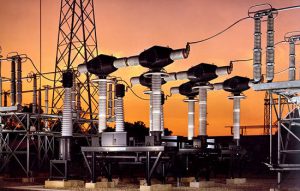
Substation Automation/Monitoring systems
Foreword
This part is intended to provide a quick access to training courses on substation automation and monitoring systems.
Considering the variety of users ranges from operators to top managers, training courses are to be geared to several groups with different expectations/back- grounds/expertise. Accordingly, table 1 provides a simplified guide as to which course is recommended to each group.
Please note that each topic has been assigned a code (shown in parentheses) which can be used for further follow-ups.
Table 1: Guide for the target groups

Topics
Substation automation – fundamentals (PTPSA101)
Objectives
- The participants acquire basic knowledge on the fundamentals of today’s technology in substation automation systems.
Contents
- General philosophies and fundamentals of substation automation technology
- Control, monitoring and protection functions/IEDs
- Functions allocation
- Substation automation architectures
- New technology (standard IEC61850)
- An optimum automation solution
- The benefits of substation automation (versus conventional stations)
- Design and manufacturing stages of substation automation systems
- Project documentations
Methods
- Lectures, demonstrations
Target group
- As per table 1
Prerequisites
- Engineering degree
- Basic knowledge of protection and control concepts
Duration
- 2 days
Substation automation/monitoring – operation (PTPSA102)
Objectives
- After finishing the course, the participants would be able to operate the system reliably and use all available system functions as expected.
Contents
- System components
- Standard control functions
- Standard monitoring functions (supervision, trends, reports)
- Add-on control and monitoring functions
- Tailor made functions
- Error handling (minor errors/fatal errors)
Methods
- Lectures, demonstrations, practical exercises at site
Target group
- As per table 1
Prerequisites
- Engineering degree
- Working knowledge of protection and control concepts
- Basic knowledge of PC based data processing
Duration
- 1 day
Substation automation/monitoring – maintenance (PTPSA103)
Objectives
- The main objective is to make participants familiar with methods of error handling and available maintenance tools as well as status codes helping them to analyze system problems. Understanding of application objects and their crucial role in system performance is another objective to be met.
Contents
- Communication protocols
- Application engineering (objects, databases)
- Interaction between bay and station levels
- Redundant systems, hot-stand by functionality (if applicable)
- Maintenance tools
- Error handling (status codes)
- System back-up
Methods
- Lectures, demonstrations, practical exercises at site
Target group
- As per table 1
Prerequisites
- Engineering degree
- Working knowledge of protection and control concepts
- Working knowledge of PC based data processing/data communication
- Course PTPSA102
Duration
- 2 days
Substation automation – engineering (PTPSA104)
Objectives
- Enabling participants to use standard libraries to make their own application. Familiarization with system fundamental building blocks (application and system objects).
Contents
- Application libraries (LIB5xx, standard picture functions)
- Application engineering (objects, databases)
- Signal engineering
- Base and communication system engineering (system objects)
Methods
- Lectures, demonstrations
Target group
- As per table 1
Prerequisites
- Engineering degree
- Working knowledge of protection and control concepts
- Working knowledge of PC based data processing/data communication
- Course PTPSA102
- Course PTPSA103 (partly)
Duration
- 3 days
Substation monitoring – engineering (PTPSA105)
Objectives
- Enabling participants to use application libraries to make their own application. Familiarization with system fundamental building blocks (application and system objects).
Contents
- SMS configuration principals
- SMS library and other standard libraries
- Application engineering (objects, databases)
- Base and communication system engineering (system objects)
Methods
- Lectures, demonstrations, practical exercises at site
Target group
- As per table 1
Prerequisites
- Engineering degree
- Basic knowledge of protection and control philosophies
- Working knowledge of PC based data processing/data communication
- Course PTPSA102
- Course PTPSA103 (partly)
Duration
- 3 days
Communication networks and systems in substations New standard, IEC61850 (PTPSA106)
Objectives
- Familiarization with new standard for communication networks and systems in substations (IEC61850). Introducing data structure and communication services in IEC61850.
Contents
- Introduction to IEC61850
- Advantages of IEC61850 compared to other communication protocols
- Basic communication structure in IEC61850 (LNs, data classes)
- Communication services (GOOSE,GSSE, RCB…)
Methods
- Lectures, demonstrations
Target group
- As per table 1
Prerequisites
- Engineering degree
- Working knowledge of protection and control concepts
- Working knowledge of PC based data processing/data communication
Duration
- 2 days
